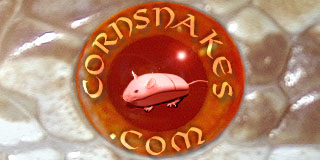Please explain in scientific, medical or psychological detail how these hybrid animals are "suffering"? I don't see my hybrids suffering from blatant medical problems, they aren't in any worse condition than any of my accepted "pure" snakes, they don't appear to be emotionally scarred by the fact that they are hybrids. I don't get the point of view that they are "suffering". :shrugs:
I do see the point of view that as humans we dabble in things we probably shouldn't, like cloning. Apart from perhaps very basic one celled organisms, there aren't any lifeforms on this planet that clone themselves to my knowledge. Cloning is a step in the wrong direction, IMO. That is definitely narrowing the gene pool, which will become a huge problem. I believe abell82 to be right about inbreeding and line breeding. At some point you have to introduce fresh genes. Maybe those genes shouldn't be from another species, but what's wrong with another breed within that species? All horses, asses, and zebras are equines, they can and will interbreed. All dogs are canines, including wolves and coyotes, and they can and will interbreed. All colubrids are in the same family and can and will interbreed. That doesn't mean that I would breed a wolf to a poodle to improve either line, nor would I breed a zebra to a Morgan to improve either line. But I might breed a poodle to a Portuguese Water Dog, which is similar, or an Arabian to a Mustang to strengthen the genetics. BReeding a kingsnake to a cornsnake isn't improving either line, it's creating something completely new which would also need fresh blood down the line. Animals have been crossing in the wild for thousands of years to develop those that we see now. Where do you think intergrades come from? Animals who's territories have overlapped and they have bred. As for breeding animals that are from different habitats, that one doesn't jive for me. A desert king will breed with a Florida king that is from a much more humid environment, yet they are both kingsnakes. I don't think nature draws such harsh lines in the sand as humans would like to believe. Nature is flexible, it has to be.
Breeding any animal has always been a moral dilemma for me. I don't believe in puppy mills or backyard breeders for puppies and kittens, so what am I doing by breeding 100+ snakes a year? Is it any different? I am reaching a serious point where I'm not sure I want to continue to produce a surplus of animals that we all know may wind up in the hands of idiots. I love my snakes too much. So whether I decide to breed hybrids or "pure" snakes, I have to decide for myself what's important.
First off, something you said is wrong in my opinion, dogs, as a rule, are no more a natural phenomena than a jar of pickles is. The fact that we deliberately took the smallest, the stockiest or whatever trait that comes to mind and emphasized it by selective breeding cannot be compared by any way to a natural occurance.
Yes, Hybrids in the wild exist, certainly- on what scale? how many of these survive, and how many of these actually manage to find another similiar mate and continue to breed? Very few.
You cannot compare selective breeding to nature, you can't. You make the rules, you are basically accelerating a process which might have -never- occured in the wild. You ensure the health of the two, you eliminate the negative odds of two such snakes to meet and then you state " it happens in the wild too"- sure it does. How many creamsicles do you think would come about in the wild? Very few, I assure you.
Many animals don't -seem- to suffer. Snakes especially will not allow a single hint of pain to show due to their extreme survival skills and their inability to express many things in a manner which we will understand. Fact is, you don't know.
Also, you speak of a single generation, that's hardly the point here- defects will develop over time.
Within nature- you have natural selection to "weed out" those who cannot survive. In your home- you take this major factor away. You can assume all you want that a said specimen will or will not survive in the wild- but it remains an assumption because you cannot and shall not imitate a totally natural environment to see if he dies or not.
It is taking a chance, and you won't be the one who ends up paying for your mistake but they will.
Personally I think too many assumptions are made without really testing them out. It is far more comfortable to think that the snakes are fine because they -seem- fine, but in truth they may be suffering.
Just like many dogs who are very happy and seem totally healthy, but in truth will suffer from leg/waist/jaw pains when they get older.
Dogs today suffer from ailments due to our selective breeding- whoever think that snakes won't end up suffering from the same fate is delusional at best, in my opinion. It is the same process, it is evolution which is condensed into unnatural environments and terms, which heeds to rules which have little in common with the that apply in the wild. I don't think you should expect different results a few generations hence, as as I said before- again it won't be us who pay the price.
